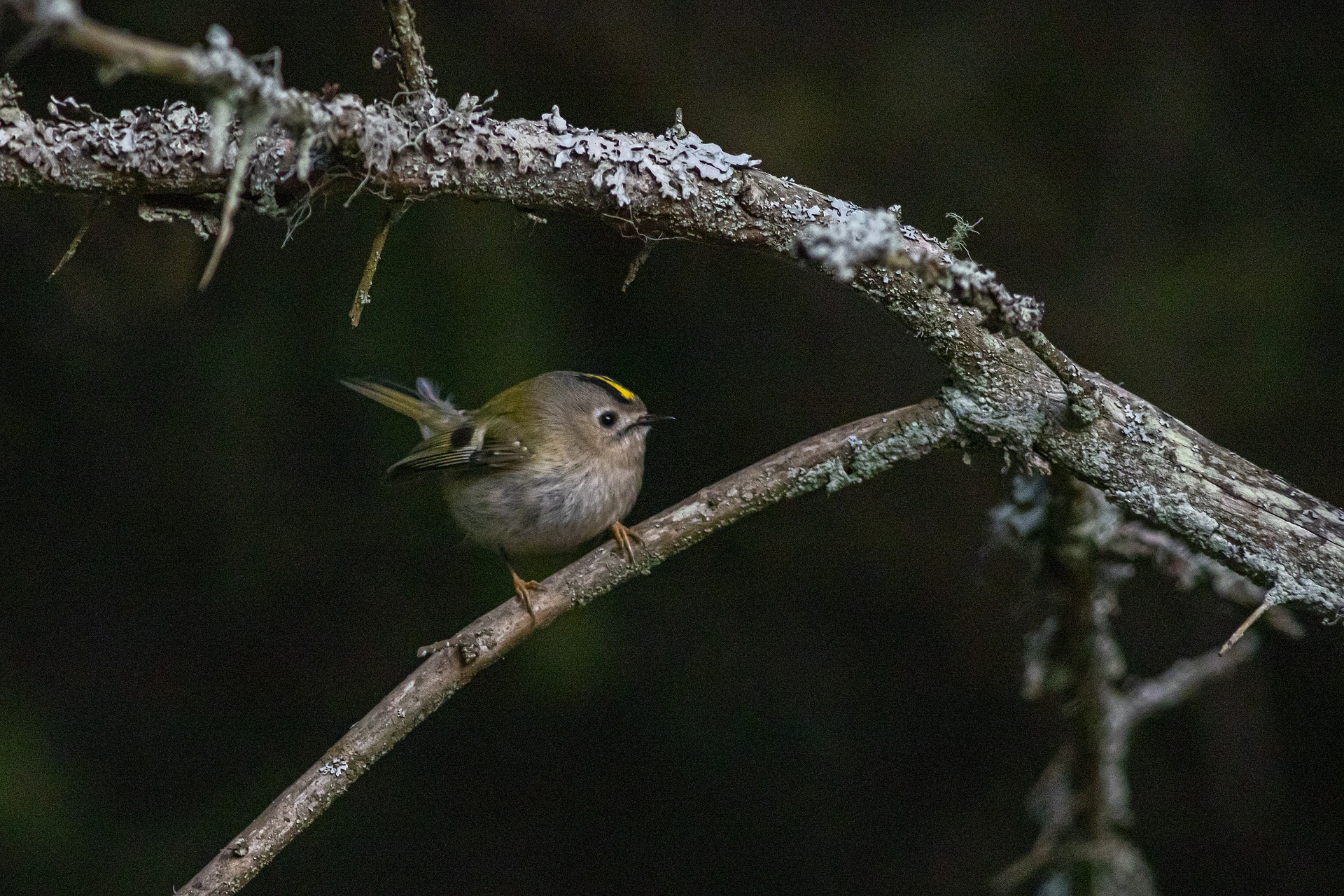The Goldcrest (Regulus regulus) is one of the smallest bird species in Europe and is known for its vibrant plumage and lively behavior. Here are some key features and characteristics of the Goldcrest:
- Appearance: Goldcrests are tiny birds with olive-green upperparts, a yellow crown stripe bordered by black, and a white eyebrow stripe. They have a distinctive golden crest on their head, which can be erected when they are agitated or excited. Their underparts are pale and may have a slight yellowish tinge.
- Size: Goldcrests measure approximately 8 to 9 centimeters (3 to 3.5 inches) in length, with a wingspan of around 13 to 15 centimeters (5 to 6 inches). Despite their small size, they are highly active and agile birds.
- Habitat: Goldcrests inhabit a variety of coniferous and mixed forests, as well as parks, gardens, and shrubby habitats with dense vegetation. They are particularly fond of dense evergreen trees such as pine, fir, and spruce, where they forage for insects and spiders among the foliage.
- Range: Goldcrests are native to Eurasia and are found across much of Europe and Asia, from the British Isles and Scandinavia in the west to Japan and Siberia in the east. They are resident birds in many parts of their range but may undertake short-distance migrations in response to harsh weather conditions.
- Diet: Goldcrests are insectivorous birds, feeding primarily on small invertebrates such as insects, spiders, and their larvae. They forage actively among the branches and foliage of trees, using their long, slender bills to probe for prey hidden in crevices and under bark.
- Behavior: Goldcrests are highly active birds that constantly move about in search of food. They are often seen flitting from branch to branch or hovering briefly as they glean insects from the foliage. Despite their small size, they are capable of undertaking long-distance flights, particularly during migration.
- Vocalization: Goldcrests have a high-pitched and melodious song consisting of trills, chirps, and whistles. They are known for their distinctive calls, including a thin, high “see-see-see” and a soft “tsii” or “tsii-tsii” contact call used to communicate with other members of their flock.
- Nesting: Goldcrests build small, cup-shaped nests constructed from moss, lichen, spider silk, and other plant materials. The nests are usually suspended from the branches of coniferous trees and hidden among the foliage to provide protection from predators. Female Goldcrests lay a clutch of around 7 to 12 eggs, which they incubate for about two weeks until they hatch.
Overall, the Goldcrest is a charming and endearing bird species admired for its beauty, agility, and energetic behavior. Despite its diminutive size, it plays an important ecological role as an insect predator and contributes to the biodiversity of its forest habitats.
Visited 167 times, 23 visit(s) today
Views: 362
Subscribe to the newsletter:
